Puget Sound
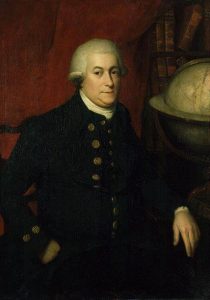 Captain George Vancouver, a British Officer, commanded the HMS Discovery and its accompanying ships on an exploratory voyage of the Pacific Northwest, between the years of 1791 and 1794. Vancouver and his crew were privileged to be the first to see places like Mount Saint Helens and the first to explore the Puget Sound. Their goal was to explore every bay and outlet in the region…following the coasts of Oregon and Washington. Men were sent in smaller boats to explore the Columbia River and enter the strait of Juan de Fuca.
Captain George Vancouver, a British Officer, commanded the HMS Discovery and its accompanying ships on an exploratory voyage of the Pacific Northwest, between the years of 1791 and 1794. Vancouver and his crew were privileged to be the first to see places like Mount Saint Helens and the first to explore the Puget Sound. Their goal was to explore every bay and outlet in the region…following the coasts of Oregon and Washington. Men were sent in smaller boats to explore the Columbia River and enter the strait of Juan de Fuca.
The larger ships, including the Chatham…the Armed Tender of the HMS Discovery, often anchored in the safe harbors, while the smaller vessels explored the many channels and rivers along the coast. On April 29, 1792, the ships entered the Straits of Juan de Fuca and anchored in the calm waters of Discovery Bay. While the ships stayed in the bay…using it as a base, Vancouver and his men explored the waters of Admiralty Inlet and Hood Canal. After several weeks of exploring, the Chatham began to sail north across the Straits of Juan de Fuca to explore the San Juan and Lopez Islands. After successfully exploring the islands, the Chatham sailed southward in May to rejoin the HMS Discovery and continue their explorations south. They moved the explorations south, as far as Commencement Bay in Tacoma, before turning around and returning north, where they hoped that the waters were going to be safer.
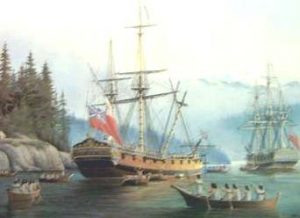 When the ships arrived at the Puget Sound, a storm was raging, accompanied by severe currents and tides. While crossing an unknown channel, the Chatham was caught by a flood tide and swept away helpless. In an effort to slow her progress, the crew dropped her stream anchor. Unfortunately, the strain was too much and the cable snapped. Amazingly, the Chatham survived, but the sweep of the waters did not locate the lost anchor, so the ship rejoined the HMS Discovery.
When the ships arrived at the Puget Sound, a storm was raging, accompanied by severe currents and tides. While crossing an unknown channel, the Chatham was caught by a flood tide and swept away helpless. In an effort to slow her progress, the crew dropped her stream anchor. Unfortunately, the strain was too much and the cable snapped. Amazingly, the Chatham survived, but the sweep of the waters did not locate the lost anchor, so the ship rejoined the HMS Discovery.
Vancouver’s journal entry for June 9, 1792 read, “We found tides here extremely rapid, and on the 9th in endeavoring to get around a point to the Bellingham Bay we were swept leeward of it with great impetuosity. We let go the anchor in 20 fathoms but in bringing it up such was the force of the tide that we parted the cable. At slack water we swept for the anchor but could not get it. After several fruitless attempts, we were at last obliged to leave it.”
These days, the anchor would be a treasure of great value, which motivated a company called Anchor Ventures, 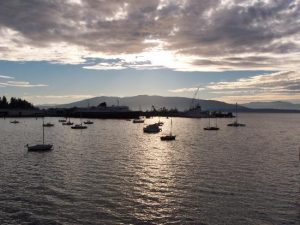 LLC of Seattle to initiate a search of not the Cannel, but rather off Whidbey Island’s northwestern shore. Their bet that the Chatham wasn’t with the Discovery at the time of the storm apparently paid off. Anchor Ventures pulled up what they believe to be the long lost anchor in 2014. Since then, the team has been trying to prove its identity. Skeptics aren’t so sure that this is the right anchor, because they say it is heavier than those of the late 1700s. That said, the question remains. Is the anchor still there, or did they jump to conclusions. It’s hard to say, and proof will be tough to find. I think it is not likely that they found the right anchor…especially looking in the wrong place.
LLC of Seattle to initiate a search of not the Cannel, but rather off Whidbey Island’s northwestern shore. Their bet that the Chatham wasn’t with the Discovery at the time of the storm apparently paid off. Anchor Ventures pulled up what they believe to be the long lost anchor in 2014. Since then, the team has been trying to prove its identity. Skeptics aren’t so sure that this is the right anchor, because they say it is heavier than those of the late 1700s. That said, the question remains. Is the anchor still there, or did they jump to conclusions. It’s hard to say, and proof will be tough to find. I think it is not likely that they found the right anchor…especially looking in the wrong place.
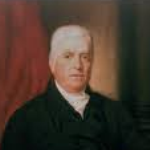
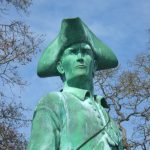 Years ago, when my sister, Caryl Reed lived in the Seattle, Washington area, I remember thinking how strange the names of some of the places were. Now that my daughter, Amy Royce and her family live in northern Washington, the names of those places have come to my attention again. It’s not that the names are all so very odd, but rather that I have a curiosity about how things and places got their names. Places like Whidbey Island, and Puget Sound are just not your typical Indian names like so much of the area, such as Snoqualmie Pass, Issaquah, or Puyallup, which all have Indian meanings. So, how did these other places get their names. Well yesterday, part of the mystery was solved for me. I’m sure some people know what I found out, but surprisingly it may not be as many people from Washington state as you might think.
Years ago, when my sister, Caryl Reed lived in the Seattle, Washington area, I remember thinking how strange the names of some of the places were. Now that my daughter, Amy Royce and her family live in northern Washington, the names of those places have come to my attention again. It’s not that the names are all so very odd, but rather that I have a curiosity about how things and places got their names. Places like Whidbey Island, and Puget Sound are just not your typical Indian names like so much of the area, such as Snoqualmie Pass, Issaquah, or Puyallup, which all have Indian meanings. So, how did these other places get their names. Well yesterday, part of the mystery was solved for me. I’m sure some people know what I found out, but surprisingly it may not be as many people from Washington state as you might think.
The islands of the coast of Washington, which extend for a number of miles inland, have always been of great interest to explorers. Waterways with islands must always lead to passages, right? Well, maybe not. There was an explorer named Joseph Whidbey who led an expedition that embarked on August 8, 1794 to look for a Northwest Passage near Juneau, Alaska. Whidbey’s goal was to locate the passage known today as the Inside Passage to Juneau. He found the passage, but felt that since it was inaccessible most of the year, due to ice in the area, it would not really serve any useful purpose. Of course, as anyone who has cruised to Alaska knows, that passage has become a very useful waterway, especially in the tourism business. Whidbey had also accompanied Lieutenant Peter Puget in small boats in 1792, to explore what is now known as the Puget Sound. On June 2nd of that trip, the men discovered Deception Pass, which was so named because the explorers erroneously thought that Whidbey Island was a peninsula, until the pass proved otherwise. The excursion was part of the Vancouver Expedition, headed up by Captain George Vancouver, who also named Whidbey Island in Joseph Whidbey’s honor.
The Northwest passage did exist, but it would not be Joseph Whidbey, Peter Puget, or George Vancouver who 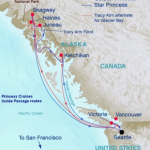
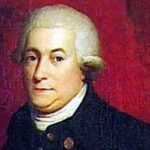 would find it, and it would be a number of years before it was discovered at all. In the end, one Robert McClure discovered the passage in 1850, and Norwegian explorer Roald Amundsen who would first navigate it with a small expedition in 1903 to 1906. The passage was unusable until about 2009 when Artic ice which had prevented regular marine shipping throughout most of the year melted some, moving back to open more waterways for the shipping industry. For me, this was interesting information, because my curious mind wonders about these things like just where did that name come from.
would find it, and it would be a number of years before it was discovered at all. In the end, one Robert McClure discovered the passage in 1850, and Norwegian explorer Roald Amundsen who would first navigate it with a small expedition in 1903 to 1906. The passage was unusable until about 2009 when Artic ice which had prevented regular marine shipping throughout most of the year melted some, moving back to open more waterways for the shipping industry. For me, this was interesting information, because my curious mind wonders about these things like just where did that name come from.
 As any photographer knows, half the battle is being in the right place at the right time. Everyone loves a great photograph, especially the ones that capture something that isn’t often seen. Being in the right place at the right time is crucial, because some events don’t happen very often…especially in front of people. That is exactly where my daughter, Amy Schulenberg Royce found herself recently. While walking on the beach near her Ferndale, Washington home, Amy commonly sees seagulls in flight. The Puget Sound is a prime feeding ground for seagulls, so they are everywhere.
As any photographer knows, half the battle is being in the right place at the right time. Everyone loves a great photograph, especially the ones that capture something that isn’t often seen. Being in the right place at the right time is crucial, because some events don’t happen very often…especially in front of people. That is exactly where my daughter, Amy Schulenberg Royce found herself recently. While walking on the beach near her Ferndale, Washington home, Amy commonly sees seagulls in flight. The Puget Sound is a prime feeding ground for seagulls, so they are everywhere.
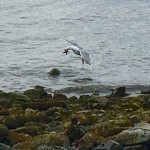 Amy loves to walk along the beach, view the sunsets, and listen to the sounds of harbor life. The horns of the ferry boats, the gulls squawking, the waves splashing onto the shore, and the people out enjoying themselves. It was during one of these peaceful walks that a seagull flew in close to shore. Amy took a picture with her iPhone and then realized that this gull had a starfish in it beak. As he landed, she scrambled to take more pictures, but he didn’t stay long. When she looked at her pictures, she realized that the first picture…the one where she had no idea that the gull had a starfish, was the perfect photo capture. What an exciting moment that was for her. It wasn’t planned, it wasn’t staged, it was just perfectly right…all by itself, with no help from anyone. All she had to do was snap.
Amy loves to walk along the beach, view the sunsets, and listen to the sounds of harbor life. The horns of the ferry boats, the gulls squawking, the waves splashing onto the shore, and the people out enjoying themselves. It was during one of these peaceful walks that a seagull flew in close to shore. Amy took a picture with her iPhone and then realized that this gull had a starfish in it beak. As he landed, she scrambled to take more pictures, but he didn’t stay long. When she looked at her pictures, she realized that the first picture…the one where she had no idea that the gull had a starfish, was the perfect photo capture. What an exciting moment that was for her. It wasn’t planned, it wasn’t staged, it was just perfectly right…all by itself, with no help from anyone. All she had to do was snap.

I’ve looked at lots of photographs taken by lots of photographers, professional and amateur alike, and while planned shots are great, it is the shot that was pure chance that sticks in your memory files. The one where a seagull looks right at you, because he can’t figure out what that human, with a camera on its face, is exactly. Or as in Amy’s case, the picture you took when you didn’t know what you had…yet. Those are great, because they are such a nice surprise. It may be a really long time before Amy finds herself in the right place at the right time to see a seagull successfully capture a starfish, or it could happen again tomorrow…if she finds herself in the right place at the right time again.
 Because our world seems always to be at war, it is an unfortunate reality that bombs will exist…some legal, made for our military to keep us safe, some legal to blow up things for construction and other things, and of course some illegal, meant to bring terror and destruction. When I think about most bombs, the word terror definitely comes to the surface…be the bomb legal or not. Never is that more of a thought that when I think about the possibility of a bomb being lost, especially due to a plane crash. During the Cold War, as a means of maintaining first-strike capability, United States bombers carrying nuclear weapons circled the earth constantly…for decades. We just never knew when we could be attacked. We had to be…always ready.
Because our world seems always to be at war, it is an unfortunate reality that bombs will exist…some legal, made for our military to keep us safe, some legal to blow up things for construction and other things, and of course some illegal, meant to bring terror and destruction. When I think about most bombs, the word terror definitely comes to the surface…be the bomb legal or not. Never is that more of a thought that when I think about the possibility of a bomb being lost, especially due to a plane crash. During the Cold War, as a means of maintaining first-strike capability, United States bombers carrying nuclear weapons circled the earth constantly…for decades. We just never knew when we could be attacked. We had to be…always ready.
The problem with planes carrying bombs and in the air constantly, is the possibility of crashes. My thought, when a bomber crashes, is what happens to the bomb. In all reality, it’s a good question. There have been about three dozen accidents in which bombers either crashed or caught fire on the runway, resulting in nuclear contamination from a damaged or destroyed bomb and/or the loss of a nuclear weapon. We don’t often hear about these…especially when they happen in the United States, but let one happen in another country, and it’s a different story. When one of these bombs was lost, it was called a Broken Arrow, mainly to avoid panic, I’m sure. One of the only Broken Arrows to receive widespread publicity occurred on January 17, 1966. A B-52 bomber crashed into a KC-135 jet tanker over Spain.
The bomber was on route to its base in North Carolina, when the crash occurred dropping three 70 kiloton hydrogen bombs near the town of Palomares and one in the sea. The KC-135 was attempting to refuel the B-52, when the B-52 collided with the fueling boom. The fuel was ignited and the KC-135 blew up, killing its crew. Four of the seven crew members of the B-52 managed to parachute to safety…the rest were lost. The bombs were not armed, but with the first two, the explosive material exploded on impact, forming craters and scattering radioactive plutonium over the fields of Palomares. One bomb landed in a dry riverbed and remained intact, and the fourth landed in the sea. No one knew for sure where it was. The cleanup was massive.
Locating the bomb that had fallen into the sea took a bit longer. The Navy used an IBM computer, and experts tried to calculate where the bomb might have landed. They were very handicapped because of the size of the 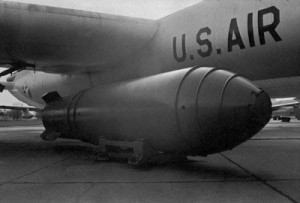 impact area. Finally, a Spanish fisherman gave an eyewitness account that proved to be so accurate that on March 15th, with a much smaller search area, a submarine spotted the bomb. The bomb was recovered on April 7th, damaged but intact, and everyone breathed a sigh of relief. This particular accident was widely reported, because it was on foreign soil. It makes me wonder why there is so little reporting on American soil Broken Arrows. To this day, two hydrogen bombs and a uranium core lie in yet undetermined locations in the Wassaw Sound off Georgia, in the Puget Sound off Washington, and in swamplands near Goldsboro, North Carolina. I suppose some people knew of these lost bombs before, but I did not…until now.
impact area. Finally, a Spanish fisherman gave an eyewitness account that proved to be so accurate that on March 15th, with a much smaller search area, a submarine spotted the bomb. The bomb was recovered on April 7th, damaged but intact, and everyone breathed a sigh of relief. This particular accident was widely reported, because it was on foreign soil. It makes me wonder why there is so little reporting on American soil Broken Arrows. To this day, two hydrogen bombs and a uranium core lie in yet undetermined locations in the Wassaw Sound off Georgia, in the Puget Sound off Washington, and in swamplands near Goldsboro, North Carolina. I suppose some people knew of these lost bombs before, but I did not…until now.
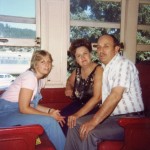 My mom and dad never wanted their kids and grandkids to move far away, but sometimes, that can’t be helped. While Alena and I have always lived here, Cheryl, Caryl, and Allyn have lived away for at least a time. One nice thing about that for Mom and Dad…if there could be a nice thing, is that they made sure that they took trips to see their daughters and their families in the states they were living in. It was a great way for them to see new areas of the country too.
My mom and dad never wanted their kids and grandkids to move far away, but sometimes, that can’t be helped. While Alena and I have always lived here, Cheryl, Caryl, and Allyn have lived away for at least a time. One nice thing about that for Mom and Dad…if there could be a nice thing, is that they made sure that they took trips to see their daughters and their families in the states they were living in. It was a great way for them to see new areas of the country too.
Caryl and her family lived away the longest, and so there were several trips made out to see her. Caryl and her family lived in a number of places too, so the trips weren’t always the same…a definite plus…at least for Mom and Dad. The rest of us didn’t get to see each other as much as we would have liked when we weren’t all in the same town. I am a lot like my parents in that I like that closeness with my kids, as well as my sisters. It’s funny how the parents always make a way to go and see their children, and the children come home to see the parents, but the siblings just don’t seem to work that out quite as often.
For Mom and Dad, their travels to visit the kids would take them, and us kids too, since we were still at home, to upstate New York, and along the eastern coast; Colorado, in the Fort Morgan and Pueblo areas; San Diego, California; Seattle, Washington; and Twin Falls, Idaho. They always turned those visits into vacations, taking the family they were visiting along. Since Caryl, was away the longest, they went to see her the most. They have many great memories of those visits. I think they especially loved the Seattle area, because of it’s beauty. Caryl showed them all the sights in the area, including Mt Saint Helens, after it blew…interesting, but sobering too, I’m sure. And there was, of course, the beautiful Puget Sound, the Pacific Ocean, and the rainforest, all of which would and do, draw the attention of people all over the country. It is a beautiful area.
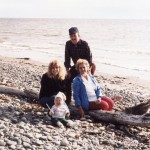
Although Mom and Dad really enjoyed the trips to visit their children who lived far away, it was always their preference to have them living close to home. When Caryl married Mike Reed, and moved to Rawlins, where Mike lived, it was a move away from Casper once more, but this time, it wasn’t so far away. Now, when they retire, they plan to move back to Casper for good, and that is going to finally bring full circle the saga. At that point all of my parents’ kids will be living in Casper again…unless someone else moves away. Today is Caryl’s birthday. Happy birthday Caryl!! We look forward to the day when you like in Casper again. Have a great day!! We love you!!

